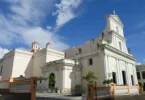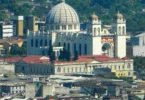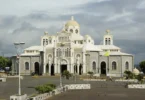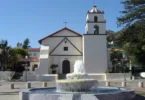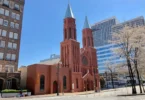Introduction
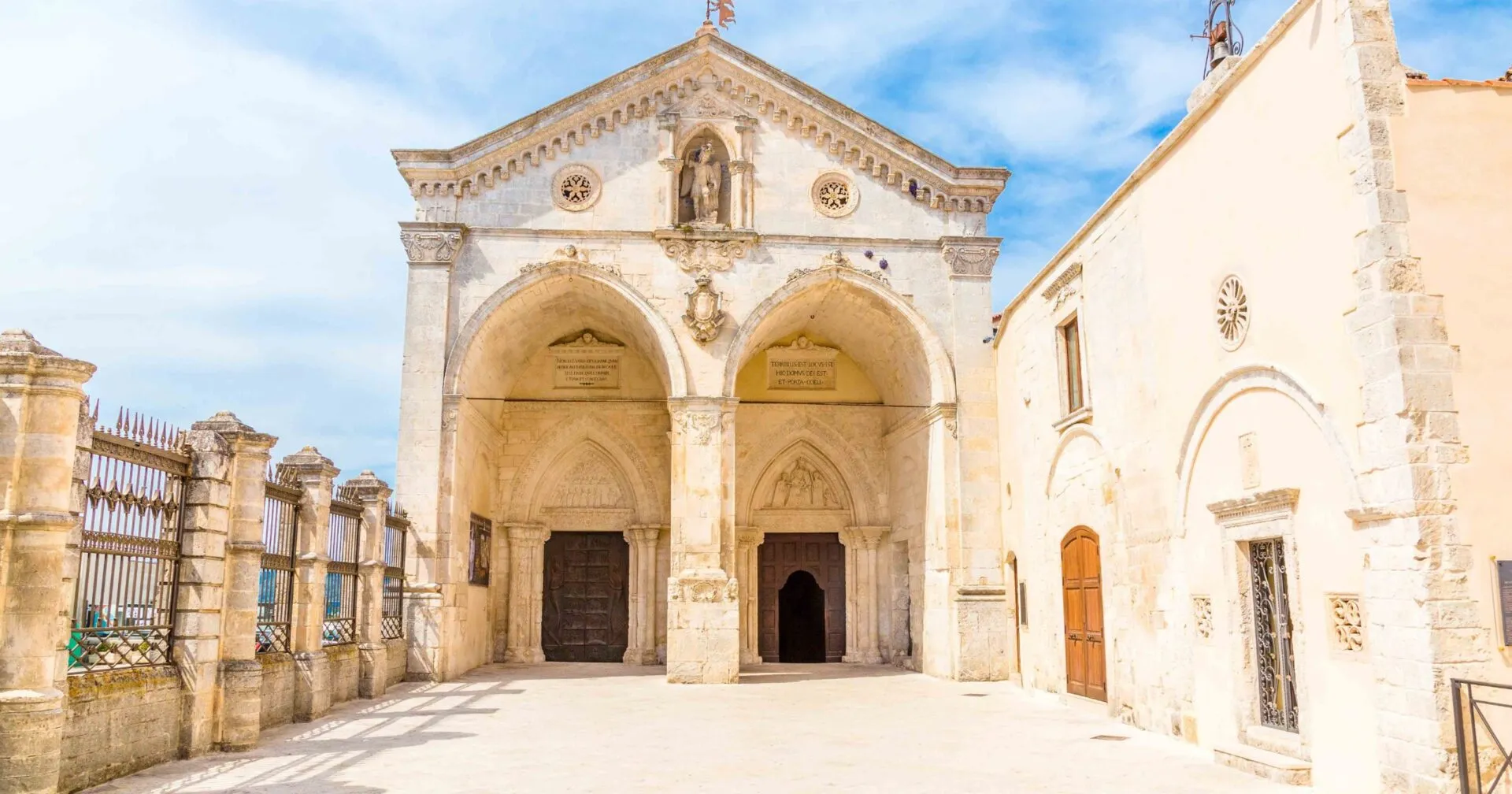
The Sanctuary of Saint Michael the Archangel (Santuario di San Michele Arcangelo) is a historic Roman Catholic shrine situated on the rugged slopes of Mount Gargano in northern Apulia, Italy. It is located in the commune of Monte Sant’Angelo, within the province of Foggia, and holds the distinction of being a minor basilica. This sacred site is renowned not only for its religious significance but also for its deep historical roots, as it is the oldest shrine in Western Europe dedicated to the Archangel Michael. The sanctuary has been a prominent destination for pilgrimage since the early Middle Ages, attracting devotees from across Europe. The site is famous for its association with a series of miraculous events and visions of Saint Michael, which led to its establishment as a major place of worship. The sanctuary’s location amidst the dramatic landscapes of the Gargano mountains further enhances its spiritual significance, offering a peaceful setting for reflection and devotion.
In recognition of its cultural, historical, and architectural value, the Sanctuary of Saint Michael was inscribed as a UNESCO World Heritage Site in 2011. It was included in the listing of Longobards in Italy: Places of Power (568-774 A.D.), a group of seven sites that highlight the enduring legacy of the Longobard kingdom and their influence on medieval Europe. This designation underscores the sanctuary’s importance as a symbol of both religious devotion and historical heritage, ensuring its continued preservation and recognition on the global stage.
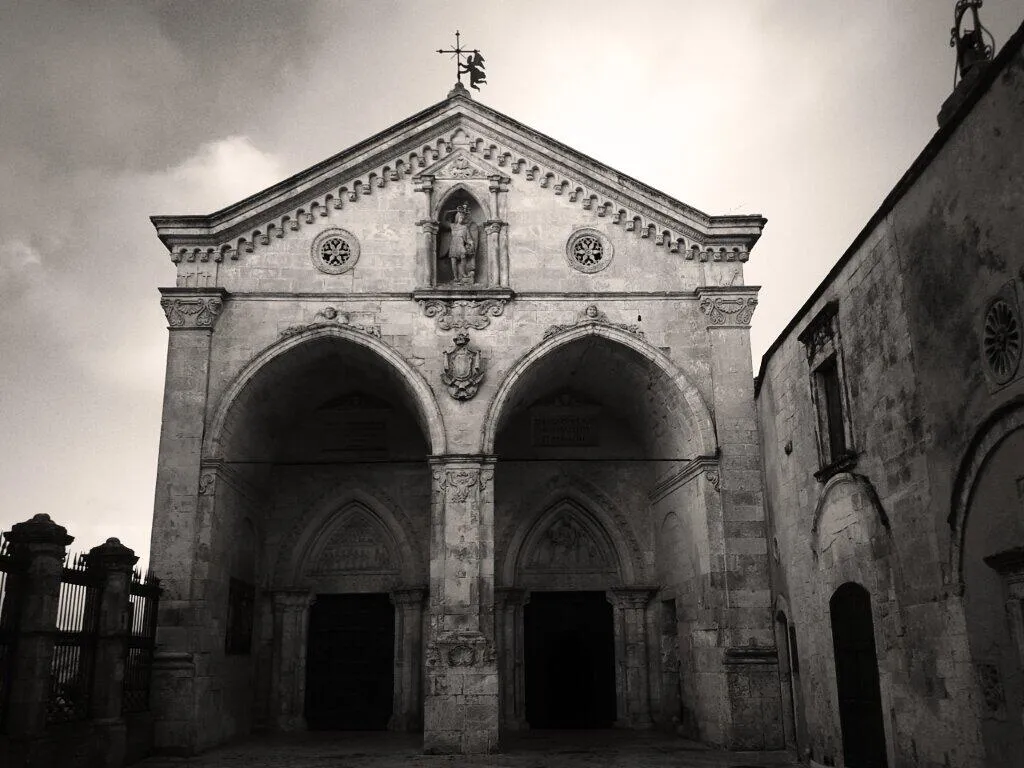
The origins of the Sanctuary of Saint Michael the Archangel are steeped in legend, with the first account of its foundation found in a Latin hagiographical text titled Liber de Apparitione Sancti Michaelis in Monte Gargano (Bibliotheca Hagiographica Latina 5948). This composite document details three apparitions of Saint Michael, each corresponding to significant events in the history of the sanctuary. While the first and third sections of the text are linked as part of the same narrative, the second describes a battle that took place decades later. The legend, which was passed down through generations, formed the basis of the sanctuary’s veneration and provided a foundation for the historical development of the site.
The First and Third Apparitions (Around 490 AD)
According to the legend, around the year 490, the Archangel Michael appeared several times to the Bishop of Sipontum, near a cave in the mountains of Gargano. During these apparitions, Saint Michael instructed the bishop to dedicate the cave to Christian worship, promising divine protection for the nearby town of Sipontum against pagan invaders. These apparitions are significant for being the first recorded appearances of Saint Michael in Western Europe, marking the beginning of a long-standing tradition of devotion to the archangel. The shrine that would eventually be built in this location became an important place of pilgrimage and religious significance in the region.
The Second Apparition: The Battle with the Neapolitan Pagans
The second section of the Liber de Apparitione recounts an event in which Saint Michael intervened on behalf of the Sipontans and the Beneventans during a military conflict against invading Neapolitan pagans. The night before the battle, Saint Michael appeared on the mountain with a flaming sword, and the forces of Sipontum and Benevento emerged victorious. Scholars such as Giorgio Otranto have linked this battle to a historical event described in Book 4 of History of the Lombards by Paul the Deacon, where the Lombard Duke of Benevento, Grimoald I, successfully defended Mount Gargano against a Byzantine Greek invasion on May 8, 663.
In honor of this victory, the Church of Sipontum established a special feast day on May 8 to commemorate the Archangel Michael’s intervention. While initially this feast day honored the Lombard victory, it gradually became associated with the apparition of Saint Michael and spread throughout Western Christendom during the 9th century. By the time of Pope Pius V, this day had been formalized as Apparitio Sancti Michaelis, a celebration of the Archangel’s miraculous protection.
Pope Gelasius I and the Basilica of Saint Michael
The significance of the site was recognized by Pope Gelasius I (reigned 492–496), who ordered the construction of a basilica to enclose the cave where Saint Michael had appeared. This move cemented the sanctuary’s status as an important Christian site, further amplifying the cult of Saint Michael in the region. The basilica dedicated to Saint Michael became a symbol of divine protection and was central to the ongoing veneration of the archangel.
Historical Development and Importance
The Sanctuary of Saint Michael the Archangel has been venerated since at least 490 AD, the year in which Saint Michael’s first apparition reportedly occurred on Mount Gargano. A small sanctuary was built in 493 at the site of the apparition, and over the following centuries, the surrounding region became part of the Lombard territories, specifically the Duchy of Benevento, by the 7th century.
During this time, the Lombard conversion from Arian Christianity to Catholicism played a significant role in the growth of the cult of Saint Michael. Queen Theodelinda began this process in 589, and it was fully completed under King Cunipert’s reign. The Sanctuary of Saint Michael became the epicenter of this religious transformation, and the archangel’s cult spread throughout the Lombard Kingdom, eventually leading to his recognition as the patron saint of the Lombard people.
The Role of the Lombards and the Growth of the Cult
As the main center of veneration for Saint Michael in Western Europe, the Sanctuary of Saint Michael served as a model for other churches and shrines dedicated to the archangel. The Lombard Dukes of Benevento and the Kings of Pavia patronized the sanctuary, commissioning renovations to improve access to the cave of the apparition and accommodate the growing number of pilgrims. The sanctuary became one of the most important pilgrimage destinations in Christianity, especially as part of a route known as the Via Sacra Langobardorum, a variant of the Via Francigena that led to the Holy Land.
The Sanctuary of Saint Michael is one of three major European pilgrimage sites dedicated to the archangel, along with the Sacra di San Michele in the Val di Susa and the Mont-Saint-Michel Abbey in Normandy. Interestingly, these three sites form an alignment along a straight line, which has led to the development of the legend of the “sacred line of Saint Michael the Archangel.” This alignment is believed to represent the path taken by the archangel when he struck Satan with his sword, sending him back to hell as described in the Book of Revelation.
Connections with Lucca and Later History
The sanctuary also has a notable connection with the city of Lucca. In 1656, Bishop Alfonso Puccinelli of Lucca reportedly witnessed another apparition of Saint Michael, and in gratitude, he donated a statue resembling the one in the sanctuary to the Republic of Lucca. This statue was placed in the Church of San Michele in Foro, symbolizing the city’s devotion to the archangel.
Following the fall of the Lombard Kingdom in 774, the sanctuary remained an important religious and cultural center within the Duchy of Benevento, which was elevated to a principality under Arechi II. Despite political changes, the sanctuary continued to receive patronage, especially during the Norman, Swabian, and Angevin periods. These rulers continued to support the cult of Saint Michael and made significant modifications to the structure of the sanctuary, enhancing its upper levels and adding decorative elements.
Architecture of the Sanctuary of Saint Michael the Archangel
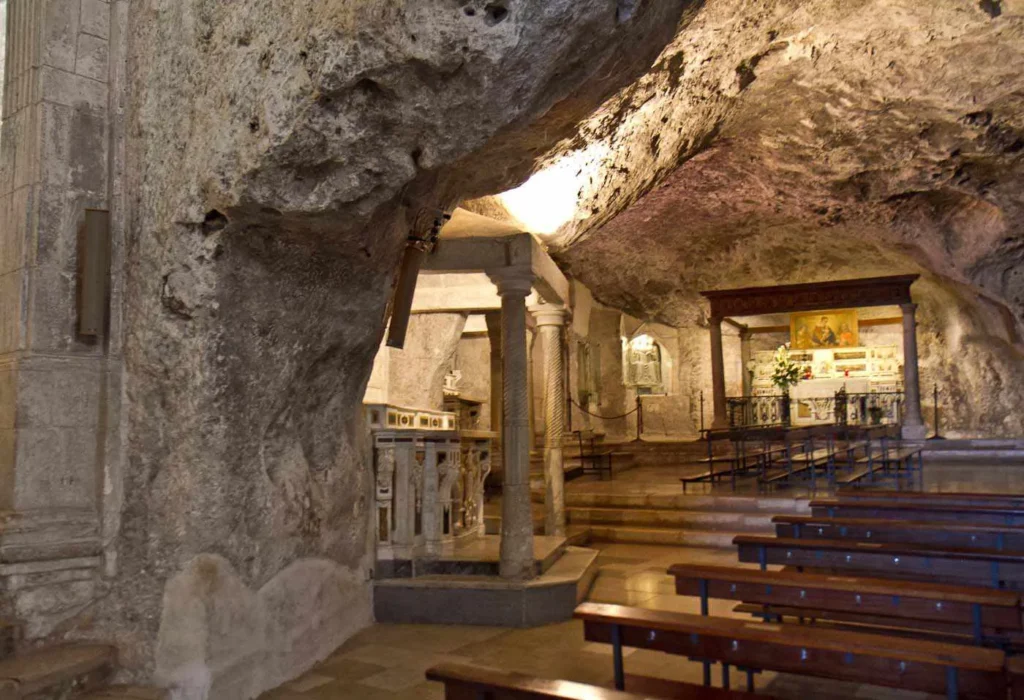
Architectural Styles: Romanesque architecture
The architectural complex of the Sanctuary of Saint Michael the Archangel is a significant blend of historical and artistic styles, representing various phases of construction and renovation from the early Christian period through to the medieval and Renaissance eras. The site houses a number of important structures, including the Battistero di San Giovanni in Tumba, the Church of Santa Maria Maggiore, and several other components that contribute to the sanctuary’s grandeur.
Battistero di San Giovanni in Tumba
One of the key architectural elements of the sanctuary is the Battistero di San Giovanni in Tumba (Baptistery of Saint John in the Tomb), which was severely damaged during World War II in 1942. The baptistery’s structure is notable for its unique design: a rectangular lower storey supporting an octagonal section, which in turn supports an elliptical drum topped by a cupola. This octagonal design was meant to symbolize the harmony between the earthly and heavenly realms. The baptistery is an important part of the sanctuary’s history, marking the religious and architectural significance of the site since its construction.
Church of Santa Maria Maggiore
The Church of Santa Maria Maggiore was constructed in the 11th century under the direction of Archbishop Leone. This church was built upon the foundations of an earlier necropolis, adding historical depth to its significance. While much of the original fresco decorations have been lost over time, fragments still remain that attest to the richness of its early decoration, providing insight into the artistry of the period. The church serves as a vital religious and historical marker for the sanctuary.
Castello (Castle) and its Architectural Evolution
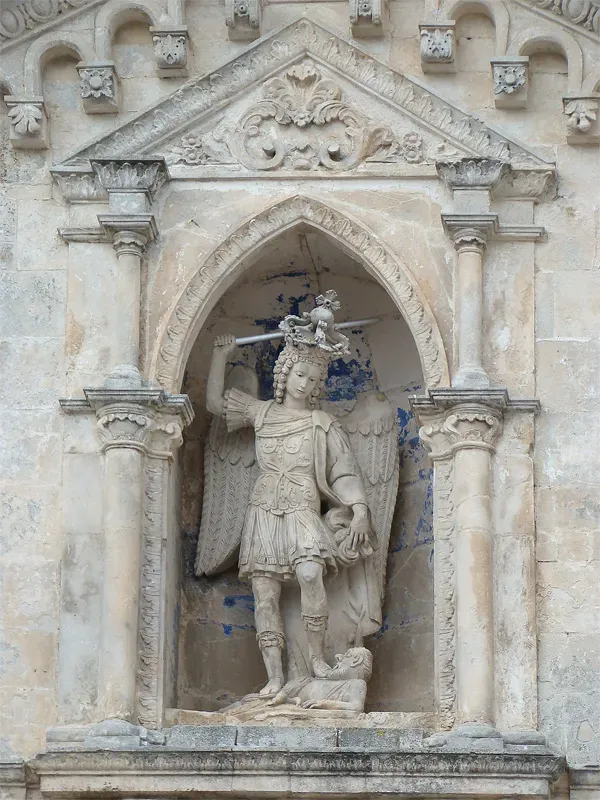
The Castello (Castle) of the Sanctuary was originally constructed as an episcopal residence by Orso, Bishop of Benevento, and was later enlarged by the Normans. The purpose of the expansion was to provide a suitable residence for the “Honor Montis Sancti Angeli” (the Honor of Mount Saint Michael), reflecting the importance of the sanctuary. Later, the castle underwent modifications under Emperor Frederick II, who added to its structure, further solidifying the connection between the sanctuary and the powerful medieval rulers of the region.
The massive, octagonal campanile (bell tower) was built in the late 13th century by Frederick II as a defensive watchtower. In subsequent years, it was converted into a bell tower by Charles I of Anjou, marking a shift from military to religious function. The bell tower stands as a monumental feature of the sanctuary, highlighting the connection between the sacred and the defensive elements of the architecture.
Portico and Romanesque Portal
Upon entering the sanctuary, visitors are greeted by a forecourt leading to a portico, which features two Gothic arches. The right arch was built in 1395 by the local architect Simone, while the left arch was reconstructed in 1865. These arches provide access to the low arched nave of the church. The cavern that forms the focal point of the sanctuary is accessed via the Portale del Toro (Gate of the Bull), a Romanesque portal adorned with bronze doors made in Constantinople in 1076. These doors, a gift from an Amalfitan noble, are divided into 24 panels that depict scenes involving angels from both the Old and New Testaments, further emphasizing the sanctuary’s religious significance.
The Cave of Saint Michael
At the heart of the sanctuary lies the ancient cavern that is central to the legend of Saint Michael’s appearances. This sacred cavern is home to a holy well and is filled with votive offerings left by pilgrims who seek the archangel’s intercession. Among the most notable of these offerings is a 12th-century marble bishop’s throne, supported by crouching lions, which has become an iconic feature of the sanctuary. Additionally, there is a statue of the Archangel Michael sculpted by Andrea Sansovino, further reinforcing the sacred nature of this site.
The Bell Tower, Upper Atrium, and Internal Features
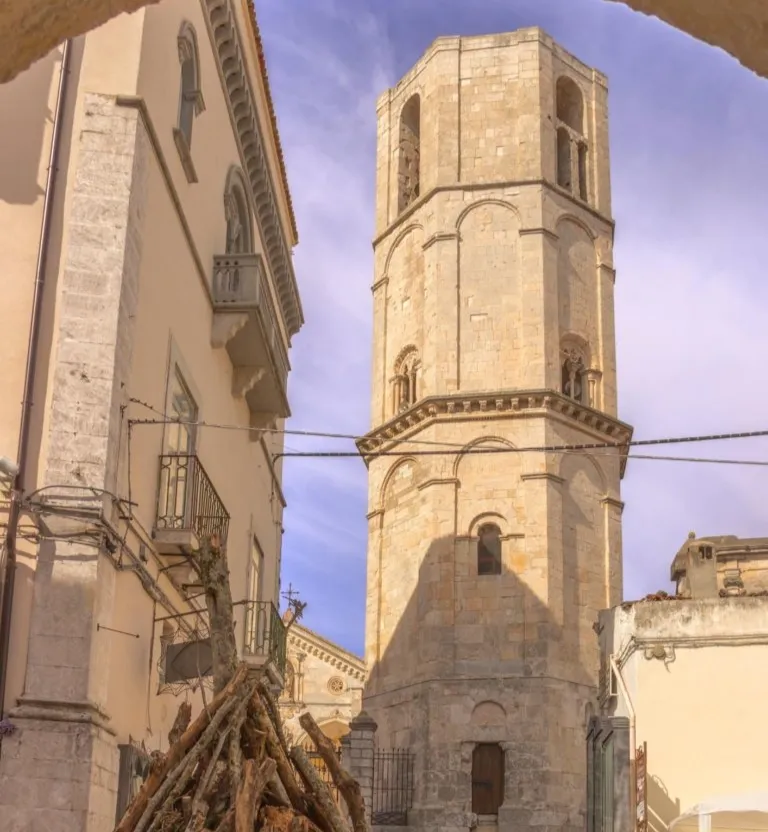
The architectural layout of the sanctuary includes several key components, including the upper atrium, a staircase that leads visitors into the heart of the sanctuary, and the internal atrium which forms the grand entrance to the nave. Within the church itself, visitors can explore various important areas, such as the choir, the Chapel of the Cross, and the Altar of the Blessed Sacrament, which highlight the deep religious significance of the sanctuary.
The Angevin Nave is another notable feature, adding to the sanctuary’s intricate design. Additionally, the Altar of Our Lady of Perpetual Help is an important location for devotion, offering a space for prayer and reflection. Beneath the main floor of the sanctuary are the crypts, which house the remains of important figures and provide a further link to the long history of the site. The museum within the sanctuary complex is home to numerous artifacts that help illustrate the rich history of the site, while the nearby stone quarry offers insight into the construction techniques that shaped the sanctuary over the centuries.
Pilgrimages to the Sanctuary
The Sanctuary of Saint Michael has been a major pilgrimage destination for centuries, with many pilgrims traveling from far and wide, including from as distant as Ireland. The site is located along a significant route that once led to Jerusalem, and pilgrims have long considered the sanctuary to be a “Celestial Basilica” where they could seek divine intervention. Among the notable pilgrims who have visited the sanctuary are numerous popes, including Gelasius I, Leo IX, Urban II, Alexander III, Gregory X, Celestine V, and John XXIII (as Cardinal). Other famous visitors include saints such as Bridget of Sweden, Bernard of Clairvaux, and Thomas Aquinas, as well as emperors, kings, and princes, including Louis II of Italy, Otto III, Henry II, Matilda of Tuscany, Charles I of Naples, and Ferdinand II of Aragon.
One of the most revered figures to visit the sanctuary was Saint Francis of Assisi. It is said that Francis, feeling unworthy to enter the grotto, stopped at the entrance to pray and meditate. In an act of reverence, he kissed a stone and carved the sign of the cross in the form of a “T” (tau), symbolizing his humility and devotion.
Guardianship of the Sanctuary
Since 13 July 1996, the pastoral care of the Sanctuary of Saint Michael the Archangel has been entrusted to the Congregation of Saint Michael the Archangel. This religious community continues to oversee the spiritual needs of the site, ensuring that the sanctuary remains a place of pilgrimage, devotion, and historical reflection for generations to come.
Feast Day
Feast Day: 29 September
The feast day of Saint Michael the Archangel, celebrated on September 29, is an important event at the Sanctuary of Saint Michael the Archangel. This day honors Saint Michael as the protector of Christians and the leader of the heavenly army. The feast has deep roots in the sanctuary’s history and has evolved to commemorate both the Archangel’s appearances and his significant role in defending the faithful.
Church Mass Timing
Monday : 8.00 AM , 9.30 AM , 11.00 AM , 4.00 PM
Tuesday : 8.00 AM , 9.30 AM , 11.00 AM , 4.00 PM
Wednesday : 8.00 AM , 9.30 AM , 11.00 AM , 4.00 PM
Thursday : 8.00 AM , 9.30 AM , 11.00 AM , 4.00 PM
Friday : 8.00 AM , 9.30 AM , 11.00 AM , 4.00 PM
Saturday : 7.30 AM , 9.00 AM , 10.30 AM , 12.00 PM , 3.30 PM , 4.30 PM , 6.00 PM
Sunday : 7.30 AM , 9.00 AM , 10.30 AM , 12.00 PM , 3.30 PM , 4.30 PM , 6.00 PM
Church Opening Time:
Monday : 7:30 am–01:00 pm, 2:30 pm –7:30 pm
Tuesday : 7:30 am–01:00 pm, 2:30 pm –7:30 pm
Wednesday : 7:30 am–01:00 pm, 2:30 pm –7:30 pm
Thursday : 7:30 am–01:00 pm, 2:30 pm –7:30 pm
Friday : 7:30 am–01:00 pm, 2:30 pm –7:30 pm
Saturday : 7:30 am–01:00 pm, 2:30 pm –7:30 pm
Sunday : 7:00 am–01:15 pm, 2:30 pm –8:30 pm
Contact Info
Address :
Via Reale Basilica, 127, 71037 Monte Sant’Angelo FG, Italy.
Phone : +39 0884 561150
Accommodations
Connectivities
Airway
Foggia Gino Lisa Airport Viale degli Aviatori, to Basilica of St. Michael the Archangel, Monte Sant’Angelo, Italy distance between 58 min (68.1 km) via SS89.
Railway
Monte Sant’Angelo 71037, Province of Foggia, Italy, to Basilica of St. Michael the Archangel, Monte Sant’Angelo, Italy distance between 2 min (450.0 m) via Via Reale Basilica and Corso Vittorio Emanuele.


